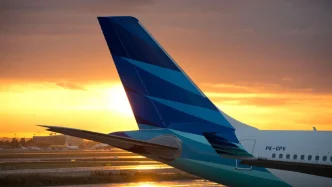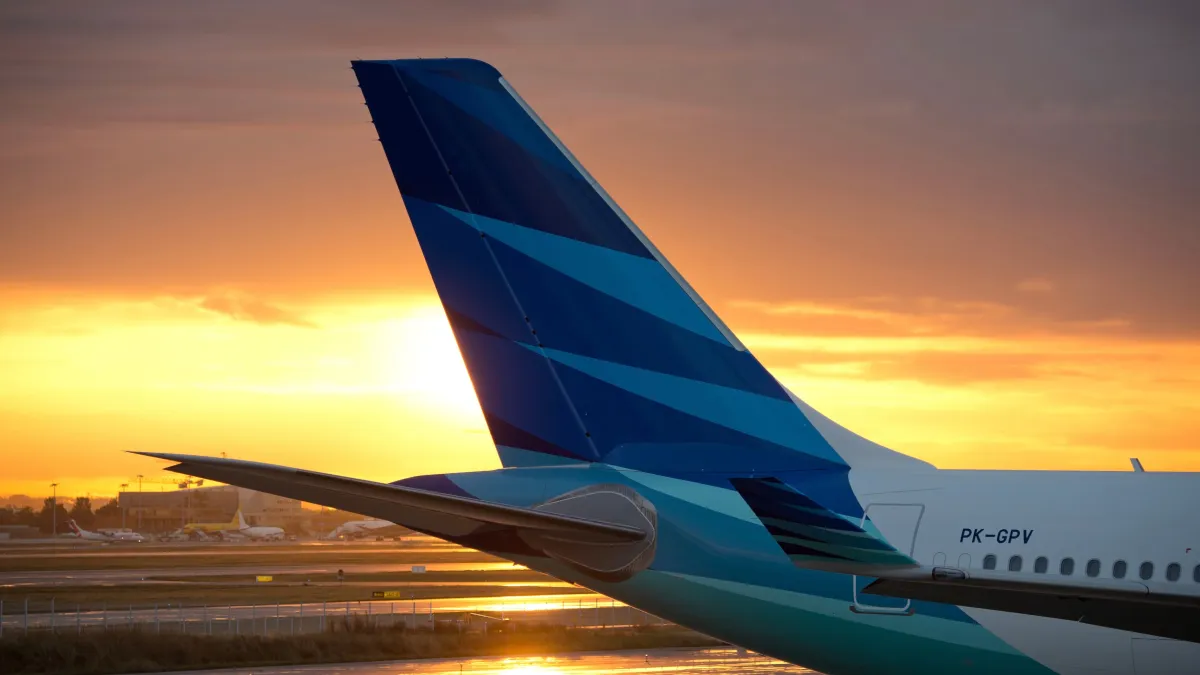Indonesia’s national flag carrier, Garuda Indonesia, is set to receive a significant financial lifeline with a capital injection of Rp 6.65 trillion (US$407.4 million) from state asset fund Danantara Indonesia. This funding, announced on June 26, 2025, marks the beginning of a broader US$1 billion support package aimed at revitalizing the airline’s operations, enhancing its competitiveness, and aligning with national goals to boost domestic connectivity and tourism. As the government seeks to position Indonesia as a regional aviation hub in Southeast Asia, this initiative could signal a turning point for the struggling carrier.
Details of the Funding Package
The initial Rp 6.65 trillion investment, channeled through PT Danantara Asset Management, will take the form of a shareholder loan specifically targeting Garuda Indonesia’s maintenance, repair, and overhaul (MRO) business. According to a press release from Danantara, the funding package encompasses multiple components, including business optimization, long-term financial support, governance reforms, and performance restructuring. The initiative will roll out in phases, with the first focusing on the operational readiness of Garuda’s fleets, including both its full-service carrier and its low-cost subsidiary, Citilink. Subsequent phases will prioritize financial and operational efficiency to drive long-term transformation.
Danantara’s Chief Operating Officer, Dony Oskaria, emphasized the strategic importance of the funding, stating, “The funding support reflects our mandate for transformation, through a professional and measurable approach that prioritizes the principles of good governance.” He highlighted that the initiative builds on Garuda’s earlier restructuring efforts between 2021 and 2024, which aimed to ensure the airline’s sustainability amid financial challenges. With this new support, Oskaria noted, Garuda has entered a phase of “accelerated improvement” to strengthen its market position and optimize its equipment.
To ensure transparency and effectiveness, the implementation of the funding will be overseen by an international-standard governance framework. This includes the appointment of an independent financial controller to monitor spending and an aviation industry expert to provide technical guidance aligned with global best practices. Such measures are intended to instill confidence in stakeholders and ensure that the funds are utilized efficiently to achieve the desired outcomes.
Garuda’s Path to Recovery
Garuda Indonesia has faced significant financial difficulties in recent years, compounded by the global downturn in the aviation industry due to the COVID-19 pandemic and subsequent operational challenges. Despite these hurdles, the airline reported a 12.54 percent year-on-year reduction in net loss for the first quarter of 2025, bringing it down to US$75.93 million. This improvement, though modest, reflects ongoing efforts to stabilize the company’s finances through long-term restructuring.
Garuda’s President Director, Wamildan Tsani Panjaitan, expressed optimism about the impact of Danantara’s support. “We believe that the success of performance improvement does not only depend on financial support, but also on the company’s commitment to reorganize overall operational and business strategy” he said during a press conference, as quoted by Bisnis. Wamildan underscored that the capital injection offers a critical opportunity to accelerate performance improvements and achieve profitability in the near term. He projected 2026 as a potential “turning point” for the airline, with expectations of recording a positive net income.
The airline also has ambitious plans for expansion. As of March 2025, Garuda operated 98 aircraft, but it aims to increase this number to around 120 within the next five years. This growth strategy is part of a broader vision to establish Garuda as a leading player in both national and regional aviation markets. However, challenges remain, particularly in securing new aircraft amid global production constraints and high demand from other airlines, as noted by Deputy Industry Minister Faisol Riza earlier this year. Faisol referenced President Prabowo Subianto’s announcement during the launch of Danantara, indicating that Garuda could order up to 100 aircraft from manufacturers like Airbus and Boeing, though the feasibility of such a large order remains uncertain.
Strategic National Goals
Beyond Garuda’s corporate recovery, the funding initiative aligns with Indonesia’s national strategy to enhance domestic connectivity, support tourism growth, and position the country as a key aviation hub in Southeast Asia. Indonesia’s vast archipelago, comprising over 17,000 islands, relies heavily on air travel to connect its diverse regions. Strengthening Garuda Indonesia’s operational capacity could play a pivotal role in improving access to remote areas, fostering economic development, and attracting international tourists to destinations beyond major hubs like Jakarta and Bali.
The aviation sector is also seen as a critical driver of Indonesia’s tourism industry, which contributes significantly to the national economy. By bolstering Garuda’s fleet and operational efficiency, the government aims to enhance the airline’s ability to serve both domestic and international routes, thereby supporting the recovery of tourism post-pandemic. Additionally, establishing Indonesia as a regional aviation hub could attract transit passengers and position the country as a gateway to Southeast Asia, competing with established hubs like Singapore and Bangkok.
Dony Oskaria emphasized the alignment of the funding with these broader objectives, noting that Garuda’s transformation is not merely a corporate endeavor but a national priority. The focus on governance and best practices, he argued, ensures that the airline’s revival will have a sustainable impact on Indonesia’s economic landscape. If successful, this initiative could serve as a model for other state-owned enterprises (SOEs) under Danantara’s purview, demonstrating the potential for strategic investments to drive sectoral growth.
Challenges and Uncertainties Ahead
While the funding package offers a promising outlook for Garuda Indonesia, several challenges could hinder its path to recovery. The global aviation industry remains highly competitive, with airlines worldwide grappling with supply chain disruptions, fluctuating fuel prices, and evolving consumer preferences. Garuda’s ability to secure new aircraft from manufacturers like Airbus and Boeing, as highlighted by Deputy Minister Faisol, is constrained by production bottlenecks and intense demand from other carriers. If the airline fails to expand its fleet as planned, its ambitions to dominate the regional market may be delayed.
Moreover, the effectiveness of the funding will depend on Garuda’s ability to implement operational and financial reforms. Past restructuring efforts have yielded mixed results, and there is no guarantee that the current initiative will fully address longstanding inefficiencies. The involvement of independent oversight and international experts is a positive step, but sustained commitment from Garuda’s leadership will be crucial to achieving the projected turnaround by 2026.
Another area of concern is the broader economic environment in Indonesia and the region. While domestic demand for air travel is expected to grow as the economy recovers, external factors such as geopolitical tensions or economic slowdowns in key markets could dampen growth prospects. Garuda will need to navigate these uncertainties while balancing the costs of expansion with the imperative to achieve profitability.
Regional Implications
Garuda Indonesia’s transformation could have ripple effects across Southeast Asia’s aviation sector. As one of the region’s major carriers, Garuda competes with airlines like Singapore Airlines, Thai Airways, and Malaysia Airlines, all of which have established strong footholds in the international market. A revitalized Garuda could intensify competition, potentially benefiting consumers through lower fares and improved services. At the same time, it may pressure smaller regional carriers to innovate or risk losing market share.
Indonesia’s push to become a regional aviation hub also raises questions about how other countries in the Association of Southeast Asian Nations (ASEAN) will respond. Singapore, for instance, has long dominated as a transit hub due to its strategic location and world-class infrastructure at Changi Airport. Thailand, with its focus on tourism, has also invested heavily in expanding airports like Suvarnabhumi and Don Mueang. Indonesia’s ambitions, if realized, could shift the balance of aviation dominance in the region, prompting a reevaluation of infrastructure and policy priorities among its neighbors.
Looking Forward
As Garuda Indonesia embarks on this next chapter with Danantara’s backing, the stakes are high for both the airline and the nation. The coming years will test whether strategic funding, coupled with governance reforms, can transform a struggling carrier into a competitive force in the global aviation industry. For now, optimism prevails among Garuda’s leadership, with hopes pinned on 2026 as the year of financial recovery. Whether this vision comes to fruition remains an open question, one that will shape not only the future of Garuda but also Indonesia’s broader economic aspirations in Southeast Asia.
















